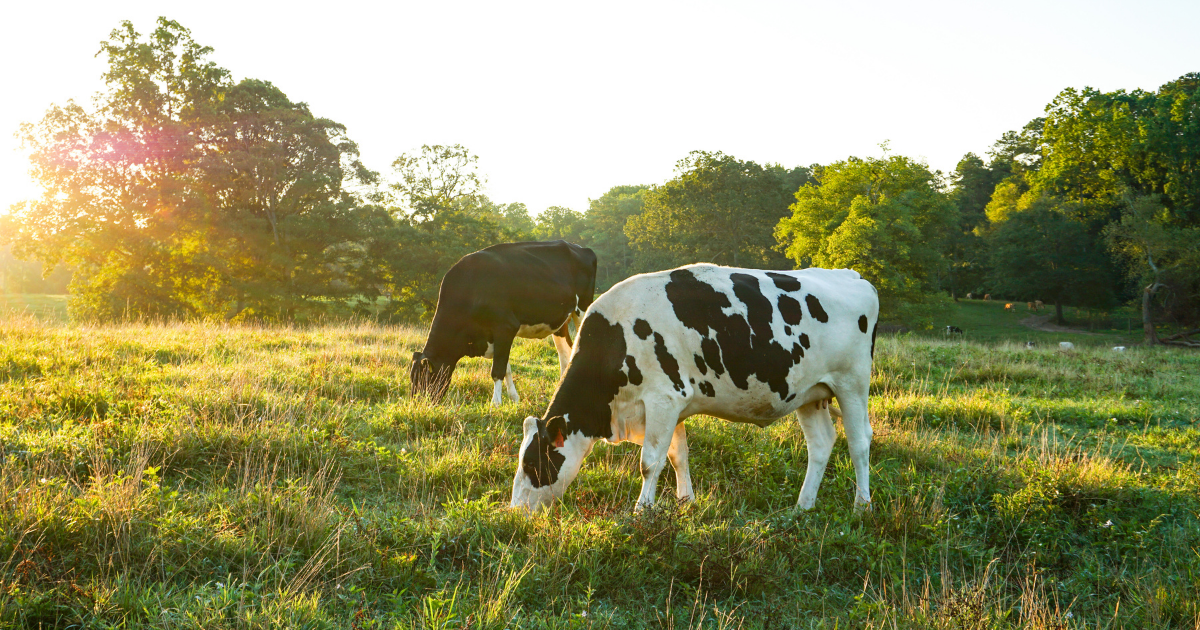The Benefits Of Rotational Grazing

Rotational grazing benefits agriculture, providing required rest periods for the environment to replenish the natural resources needed to encourage biodiversity. Agriculture is the leading cause of pollution to our environment. According to the USDA Economic Research Service, half of the land area in the United States is farmland, with nearly 1.2 billion acres producing food and products.
What is Rotational Grazing?
Rotational grazing is the movement of animals from one section of a pasture to another. Rotational grazing improves pastures in the long-term resulting in an abundance of desirable species and eliminating the wasting of forage.
Grazing encourages plants to develop deeper roots. The roots boost soil biomass and fertilize the ground by isolating carbon from the atmosphere. Managing your pasture reduces soil erosion. The degree of grazing creates a compaction problem. However, management practices, such as finding alternative water sources and avoiding overgrazing by rotational systems, can reduce soil erosion.
Benefits Of Rotational Grazing
There are multiple advantages to a rotational grazing system. Rotational grazing involves a system dividing large pastures into smaller paddocks. The system allows the livestock to move from one blocked-off chunk to another, permitting the paddocks to regrow and develop without disruptions. Implementing rotational grazing can help improve long-term pasture quality and fertility by favoring desirable pasture resources such as livestock and materials. You will not need additional resources once you have a solid grazing system. Investing in fencing infrastructure that forms either a permanent or temporary framework increases the productivity and effectiveness of rotational grazing.
Movement between paddocks permits the blocked-off section a rest period to improve the health of the paddock. Reinitiated growth and renewed carbohydrates result in better health for cattle. Manure distribution is a way for the soil to be healthy and supplemental for the livestock. With rotational grazing, there is a more effective distribution of manure. All of these advantages depend on the system, the complex interactions of livestock, and the overall environment. When executed efficiently, rotational grazing improves the quality of the pasture, crop, and livestock.
Drought Management
Drought conditions continuously escalate, and water has become a concern for customers all around the U.S. Despite conservation efforts, water is a staple. Rotational grazing allows for more cost-effective and efficient irrigation control, combatting drought and climate change. Farmers throughout the Midwest practice rotational grazing. Initially developed to improve the condition of pastures, farmers discovered that water distribution is key. Overgrazing causes little to no time for grasses to recuperate, which leads to a larger amount of water required.
Land Erosion Prevention
Rotational grazing improves the management of animals which results in less land erosion. Cattle and livestock are regularly rotated to different grazing pastures consistently (days, weeks, or months) depending on the strategy, whichever is easier to manage. This rotation allows certain species of plants to grow and develop more quickly. Plants that have more extended rest periods can better grow their roots. The larger the origins, the more organic material is released into the soil, allowing for improved soil health.
Boost Soil Biomass
The general rule of thumb is that a well-maintained grazing system will increase the production of forage by 30-70%. The soil is well kept with livestock continually grazing the tasty plants every few days. The producer can be more in control of the intensity and timing of the forage and biomass grazed by the cattle.
We Can All Do Our Part
Everyone has a role to play in California’s efforts to conserve water and protect our natural resources. To learn more about how you can participate in providing effective solutions to our diminishing water supply, join NID at one of our upcoming Plan for Water Special Workshops.
